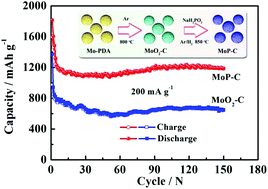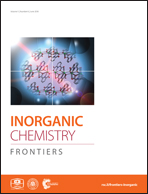Preparation of porous MoP-C microspheres without a hydrothermal process as a high capacity anode for lithium ion batteries
Abstract
Molybdenum phosphide (MoP) is one promising electro-active material for lithium ion batteries (LIBs) in view of its high theoretical capacity. However, major challenges, such as poor cycling stability, still need to be solved for MoP anodes. In this work, we have proposed a facile, template-free strategy to synthesize MoP-C microspheres by carbonization and phosphorization of a Mo-polydopamine precursor at a high temperature without a hydrothermal process. The carbon framework is derived from the carbonization of dopamine, which not only improves the conductivity and the surface area of MoP, but also relieves the volume expansion during the cycling procedure. Due to its microstructure, the porous MoP-C microsphere anode exhibited excellent lithium storage performance, including a good cycling stability and specific capacity. The MoP-C material also exhibited excellent cycling properties with a capacity of 1152 mA h g−1 for 150 cycles at 200 mA h g−1. It is expected that this strategy for preparing MoP-C microspheres can be applied for other metal phosphides for LIBs.



 Please wait while we load your content...
Please wait while we load your content...